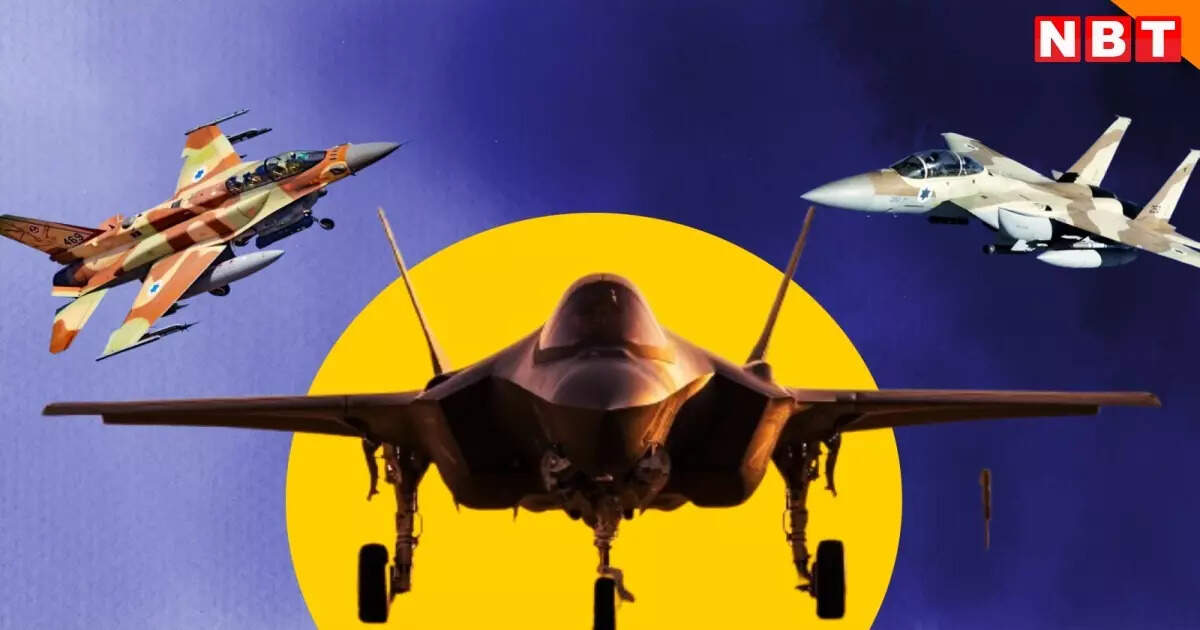Now Reading: फाइटर जेट्स में इजरायल की कस्टम स्ट्रैटेजी: ईरान पर हवाई दबदबा कायम
-
01
फाइटर जेट्स में इजरायल की कस्टम स्ट्रैटेजी: ईरान पर हवाई दबदबा कायम
फाइटर जेट्स में इजरायल की कस्टम स्ट्रैटेजी: ईरान पर हवाई दबदबा कायम

Quick Summary
- Israel Air Strike on Iran: Israel conducted airstrikes on 100 Iranian targets using three advanced fighter jets – F-35 Adir, F-16 Sufa, adn F-15 Ra’am. Over 330 missiles were launched during the operation.
- Modified Fighter Jets: Israeli engineers have customized Lockheed Martin’s F-35 Lightning II (adir variant), equipped with advanced C4I systems for real-time data sharing with other aircraft like the F-16 and F-15.
- Impact of Stealth Aircraft: The Israeli-modified stealth technology allowed precision strikes on Iran’s nuclear sites and military bases,while evading Iran’s air defence systems.
- Fighter Capabilities:
– F-35 Adir: Flew a round-trip of 2,000 km without mid-air refueling due to external fuel tank modifications; deployed its stealth and electronic warfare capabilities effectively.
– F-16 Sufa: Significant range enhancements along with multi-role capabilities involving precision-guided bombs and missiles; previously seen in operations like Syria in 2007.
– Fighter Coordination: Data integration among these jets enabled streamlined attacks across multiple targets.
Indian Opinion Analysis
the operation underscores Israel’s strategic use of cutting-edge military technology to address perceived threats from Iran’s nuclear ambitions. The prosperous modification of American aircraft such as the F-series fighters demonstrates Israel’s focus on technological customization suited to regional operational needs. These advancements reflect a broader trend in global defense strategies emphasizing stealth technologies, real-time intelligence sharing, and maximizing execution efficiency within adversarial domains.
For India, this highlights potential adaptability models regarding indigenous upgrades to imported defense platforms (e.g., Rafale or Sukhoi jets). Incorporating region-specific demands into existing technologies could reinforce India’s defensive posture or extend its operational reach without relying solely on foreign designs. While India maintains good relationships with both nations involved in this conflict (Iran for energy partnerships; Israel for defense cooperation), escalating tensions may indirectly affect regional stability-India often advocates dialog-driven resolutions regarding contentious issues between partner states like these.
























